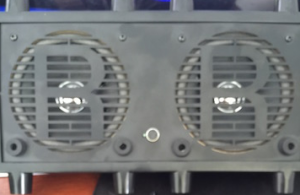There are also quite in-expensive analog active crossovers - I mean ~70usd range. Installation or car types even.
In my current 'hifi' speaker build, I'm using one such to find my crossover frequencies. I can then work on some fixed crossover network for inclusion inside the cabs.
Or not! The active crossovers are pretty good to use if you have the multi-amp setup

2way or 3way mono or stereo and with a sub split as well - makes for some very interesting experimenting with speaker and room setups.
---
These current hifi speakers are going to be interesting
- Sansui 12" alnico woofsters circa late 60s - virtually nos from tube-based gear. These are high sensitivity and quite 'dry', using paper cones. NO poly-whatever cones here!
- Fostex 5" full range, current issue, as a 'mid and little hi-freq' driver. I don't like extended hi-freqs, so I need to dial down the fostex top end to suit.
So, a pair of two-way boxes way boxes, external active 3way stereo, analog crossover with optional sub split
.
I am still finding I prefer tube amps for hifi, but that's no problem even with multi-amping - my diy tube amps are beginning to pile up all over the place.
I even scored a pair of the Sansui cabinet grills - the intricate wooden trellis types. Awesome ebay find, and continuing this particular styling theme is great - my other speakers are Sansui sp9000 '70s 12" 3way, and a truly wonderful pair of little Realistic 8" 2ways. All with wonderful wooden grills and in virtual nos condition.
I find listening to modern, high power handling speakers with poly woofers not as lifelike as the lower-power rated paper cones.
Excepting my Tannoy 8" concentrics, which sound really good with a proper strong power amp as a studio monitor setup.
--
Good luck with your build! And if you haven't already, get the free software app 'Room EQ Wizard (REW)' and, like me, try to learn how to use it with a mic for tuning and test measurements!
I have yet to get useful measurements of speaker response tho' - there's a lot of technique in the setup of the speaker-under- test and placement of measurement mic to avoid reflections and such. All good stuff however, and a question of practice





